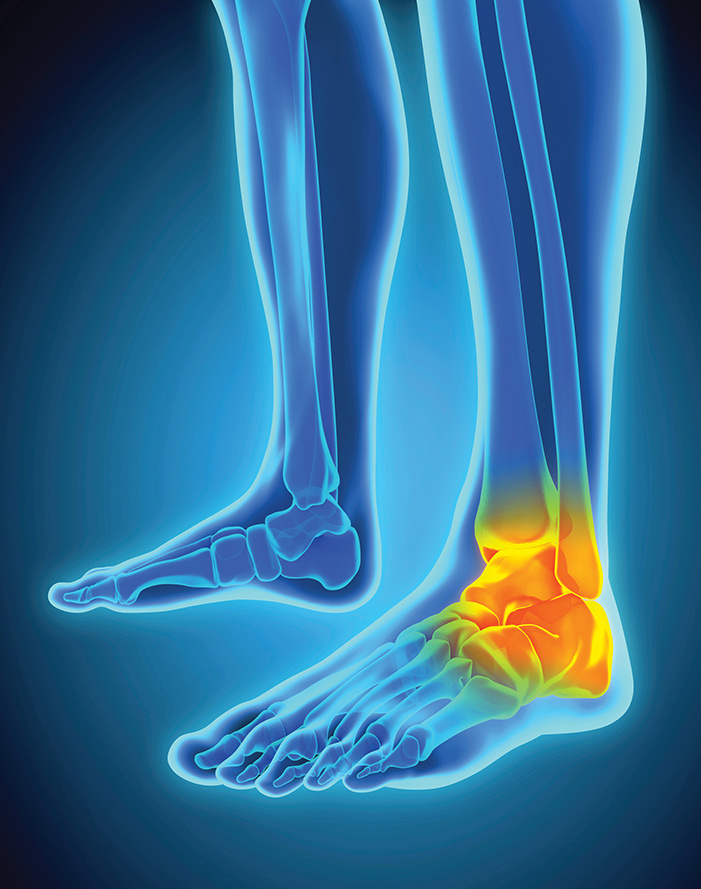Okikiko.com – Although ankle synovitis cannot be prevented, there are some steps you can take to reduce the risk of the condition and reduce the severity of the injury. These include avoiding activities that put stress on your joint. While this is not always possible, it will help reduce the likelihood of getting the condition. One such activity is running. You should avoid doing this if you’re suffering from the disease. However, if you’re unable to stop running, your health care provider may recommend physiotherapy.
Proper warm-up can reduce the risk of developing synovitis

Besides preventing injuries, proper warm up is important for avoiding ankle swelling. The right warm up can help you prevent muscle imbalances and reduce the risk of developing synovitis. Ankle arthroscopy can also help you diagnose some specific symptoms and treat them. This procedure helps your doctor determine whether you’re experiencing pain or a more serious condition. It can also be used to reduce the load of the disease.
Your doctor will examine your ankle to find out the exact cause of the symptoms. You’ll likely have a swelling of the ankle joint and muscle tenderness. You may also notice a hard lump or painful nodule in the joint. Regardless of the cause, treatment for ankle synovitis is important. If you are suffering from the condition, you must see a specialist as soon as possible. If you don’t have a doctor who can prescribe the right medication, the disease may reoccur.
Physiotherapy is an essential component of treating ankle synovitis

Ankle synovitis is common and can be caused by a variety of different factors. The most important thing is to see a physician as soon as possible for treatment. Ankle swelling is a symptom of synovitis. Physiotherapy is a crucial component of treating ankle synovitis. In the majority of cases, it can be treated with physiotherapy and can help you regain a healthy lifestyle.
If your doctor suspects ankle synovitis, he or she will recommend the correct treatment. Often, the condition will heal with appropriate medication, and your doctor will prescribe a physiotherapy program. If you have symptoms of ankle synovitis, your doctor will prescribe medication to reduce swelling and improve the condition. Patients must also take pain medication to help relieve the symptoms. They should consult a physiotherapist for treatment.
Consult a doctor as soon as possible if you experience symptoms

Injuries to the ankle are the most common cause of ankle synovitis. If you have experienced a serious ankle sprain, you should consult your doctor immediately. You may need to take a few precautions to avoid getting synovitis. Do not start weight-bearing activities too soon after an injury. You may have to take medications to manage the symptoms. During these times, you should avoid putting pressure on your ankle.
Ankle synovitis is a common condition that may result in swelling of the ankle joint. If it’s accompanied by arthritis, your doctor will prescribe medication to control the pain and inflammation. Ankle synovitis treatment should be aggressive to ensure you get the best results. If your synovitis is caused by prior injury, you might be at risk of getting arthritis. You should consult your doctor if you have pain in your ankle.
Ankle synovitis is easy to treat

Ankle Synovitis is a condition that affects the soft tissue surrounding the joint capsule. This condition can be caused by repeated injuries, arthritis, and gout. If you have chronic synovitis, it is very important to consult your doctor as soon as possible. Depending on the severity of the condition, it may be painful and require medical attention. Ankle synovitis is a very common condition that can be easily treated.
Ankle inovitis can be hard to diagnose

Ankle synovitis is a common inflammatory condition that causes pain and stiffness around the ankle joint. It can lead to bone damage and cartilage degeneration. Ankle synovitis can be difficult to diagnose, so it is important to see a podiatrist to have your ankle checked. If you’re experiencing swelling or pain in the ankle, you should seek treatment as soon as possible.
Symptoms of Ankle Synovitis include pain and heat in the ankle joint. These symptoms may be mild or severe, ranging from aching to burning. They may be deep inside the joint and can be difficult to detect on the exterior. Affected patients can experience decreased range of motion and loss of function, as well as tightness in the joint. Ankle synovitis can cause pain, swelling, and arthritis, and should be treated as quickly as possible.


